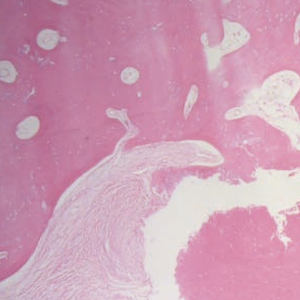A rare ossifying trichilemmal cyst in a young female patient: case report and literature review
 Smart Citations
Smart CitationsSee how this article has been cited at scite.ai
scite shows how a scientific paper has been cited by providing the context of the citation, a classification describing whether it supports, mentions, or contrasts the cited claim, and a label indicating in which section the citation was made.
Trichilemmal cysts (TCs) constitute the second most common cutaneous cysts and are mostly presented on the scalp of middleaged women. Therefore, it is unusual for a young person to have a TC and it is extremely rare for a TC to be ossified. In the literature, only 8 cases of TCs with concomitant ossification have been described. We report the case of a 22-year-old female who presented with a scalp nodule and was treated via surgical excision of the lesion. The pathology examination of the surgical specimen revealed a lesion consisting of a multilayered squamous epithelium of slightly eosinophilic maturing keratinocytes. There was no granular layer, whereas the core of the lesion was occupied by mature bone tissue with calcium deposits. The definite diagnosis of the pathology report was ossifying TC. The aim of this report is, to enlighten clinicians about this rare pathological entity.





 https://doi.org/10.4081/dr.2022.9569
https://doi.org/10.4081/dr.2022.9569






